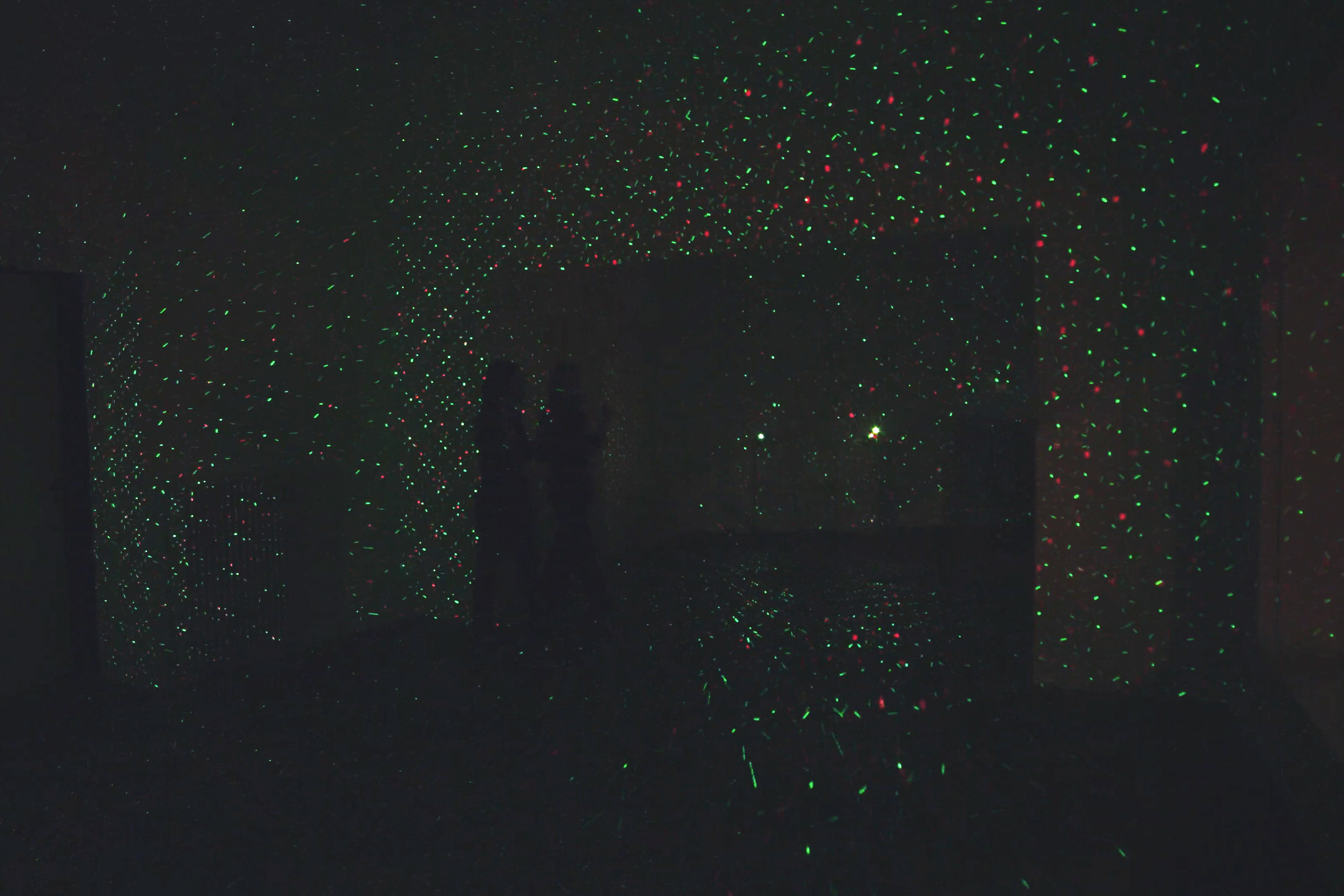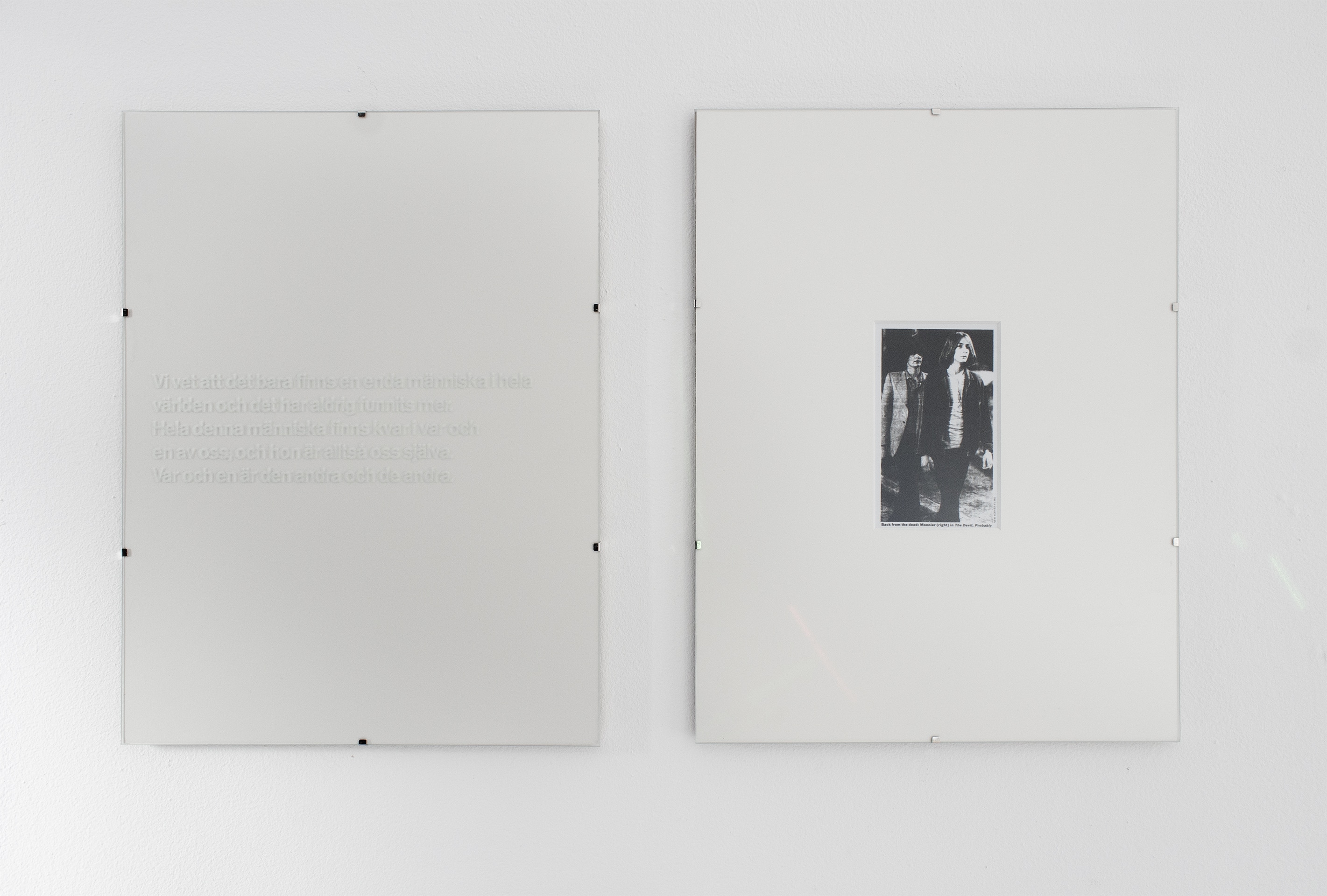April 16 — 29, 2021
The linguistic sign is arbitrary and unmotivated. It is two-sided. Comprising, on the one hand, expression, and on the other, content – with no logical connection between the two. There is the mental concept and the image, word, or sound that represents it. The Swedish word “jama” and the Italian “miagolare” share nothing on the expressive plane, but two people from different language communities partake in the same content upon seeing or hearing the word: a cat meowing. We know all of this. But when a conceptual shift takes place, words lose their footing.
In the play in girum imus nocte et consumimur igni – a title that reads the same way backwards – the division of the sign is reflected with a physical mirror. The script consists of excerpts and references recited by the lone protagonist Dubbelgångaren [The Double], with each line beginning with a marker indicating a collective subject perspective, “we”. However, this protagonist no longer knows who is implicated in this “we” – as it has shifted from being a pronoun to becoming a decorative concept. It has been borrowed and distorted by the corporate world to be used against “consumers” to build a relationship of trust. Constructing a fictional community on a propagandistic, jargon-like, or pseudo-socialist register has always proved an effective means of selling products, lifestyles or political beliefs, but it is done at the expense of the original meaning. Without knowing it, Dubbelgångaren portrays a linguistic sign in crisis: the growing distance between expression and content created by the conventions of a new society.
The exhibition space is stripped down, apart from a mirror which reflects the lone protagonist as well as the spectators who are thereby made aware of how their participant role balances on the border between active agent and passive object. This passivization is not random, because where are the actors of resistance? Language should be a means for action, but someone else has put words in the mouth of Dubbelgångaren. The references interspersed in her lines indicate the effects of an internalized linguistic system which is always already borrowed. The words in circulation have been chosen by someone else, someone who wishes to exploit our purchasing power. Dubbelgångaren is forced to use speech acts to denote her activity: she chants, propagates, promises, because she suspects that her words may very well mean nothing. Is the sign double or is it split?
The arbitrariness of the sign makes it fragile and interchangeable; changes in conventions can give expression to new content. The “we” is diluted, because the water drop erodes the stone, and so on.
“Everyone can destroy. It’s simple.”
That’s why Dubbelgångaren dances alone.
– Emma Hatt
in girum imus nocte et consumimur igni, Performance, Performed by Amina Szecsödy, 2021
in girum imus nocte et consumimur igni, Performance, Performed by Amina Szecsödy, 2021
Untitled (Jean Genet), 2021, Glas engraving, 30 x 40 cm
Untitled (Robert Bresson), Inkjet-print, 30 x 40 cm
Untitled (Tony Conrad), 2021, laser-engraving, 30 x 40 cm

Totus Mundus Agit Histrionem, performed on Twitch 29.04.2021



